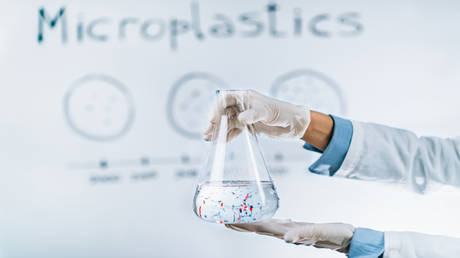Research Confirms Presence of Microplastics in Human Brain
A study suggests that inhaling particles from synthetic polymers may be associated with an increase in neurodegenerative diseases in individuals. Read the full article at RT.com.

A study, published by the American Medical Association in its journal JAMA on Monday, demonstrates that microplastics are now being found within human brain tissue. These microplastics, which have been a source of environmental and health concerns over the past few years, range from 0.0055 to 0.025 millimeters in size. Previously detected in various human tissues and the bloodstream, their discovery in brain tissue has not been documented until this point, according to the study.
Conducted by researchers from Sao Paulo University's medical school, the study involved examining the brain tissues of 15 individuals, aged between 33 and 100, who had resided in Sao Paulo—Brazil’s largest city. These examinations took place between February 2023 and May 2024.
Particularly, researchers looked into the tissues of the olfactory bulb, a region of the brain related to the sense of smell, and found microplastics in the samples from eight of the tested individuals. Throughout the study, a total of 16 synthetic polymer particles and fibers were identified, including a notable presence of polypropylene.
The study investigators believe the pathway for microplastics entering the brain likely involves inhalation through the nose, given their detection in the olfactory bulb. “Propylene is everywhere, in furniture, rugs, clothes,” Dr. Thais Mauad, lead author of the study, explained to NBC News. “We know the place we are most exposed to particles is indoors, because all of our homes are full of plastic.”
Commonly used in food packaging—ranging from bottles and jars to yogurt containers and coffee cups—polypropylene breaks down into microplastic particles, which then potentially enter the human body either through ingestion or inhalation.
Discovering microplastics in the olfactory bulb opens up the possibility of these particles traveling to other brain regions. The study thus emphasizes the "potential pathway" for such transmission, which, combined with the environmental ubiquity of plastics, warrants concern over their potential role in the "increasing prevalence of neurodegenerative diseases."
The discovery follows earlier studies indicating significant human ingestion of plastics. Findings from 2019 suggested that the average person might ingest around 50,000 microplastic particles annually. Another study estimated that this ingestion might be as much as five grams of plastic per week—roughly the weight of a credit card.
Mark B Thomas for TROIB News












